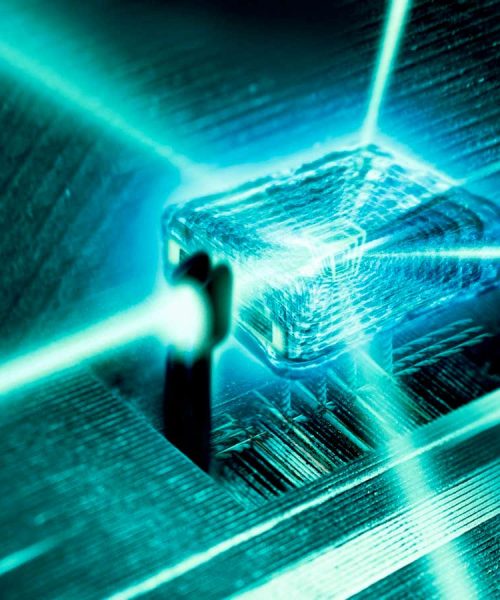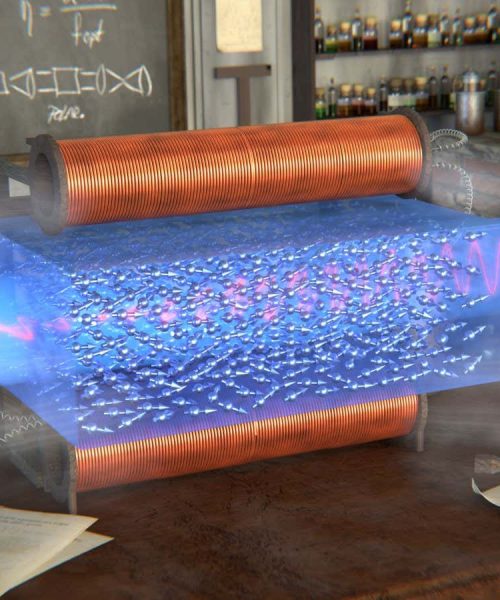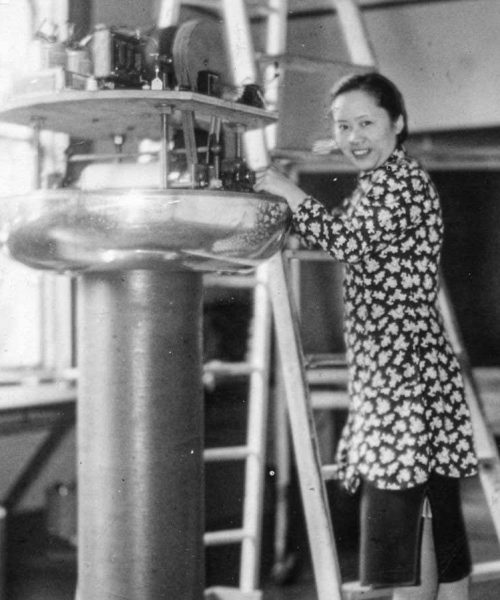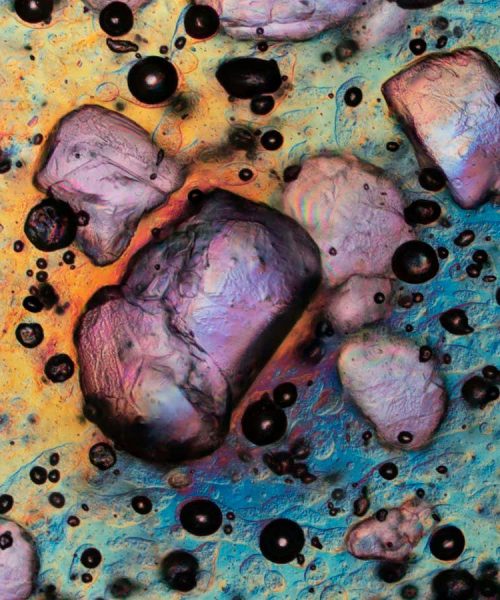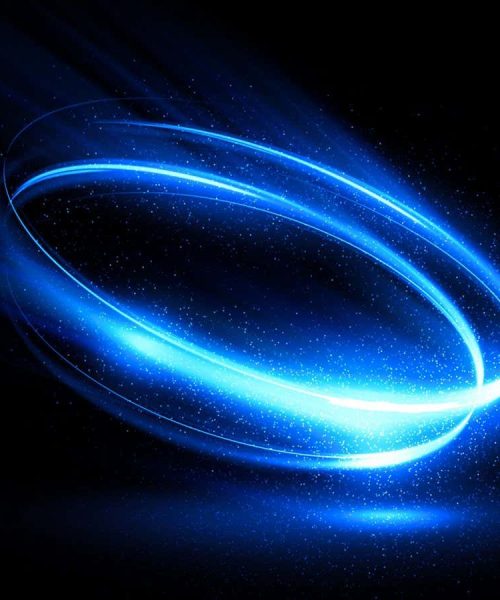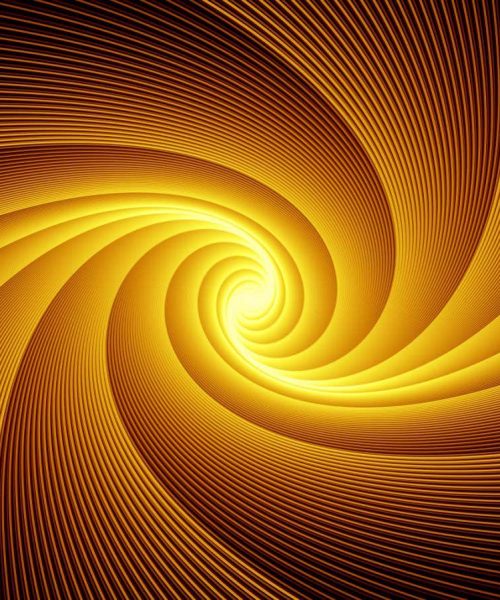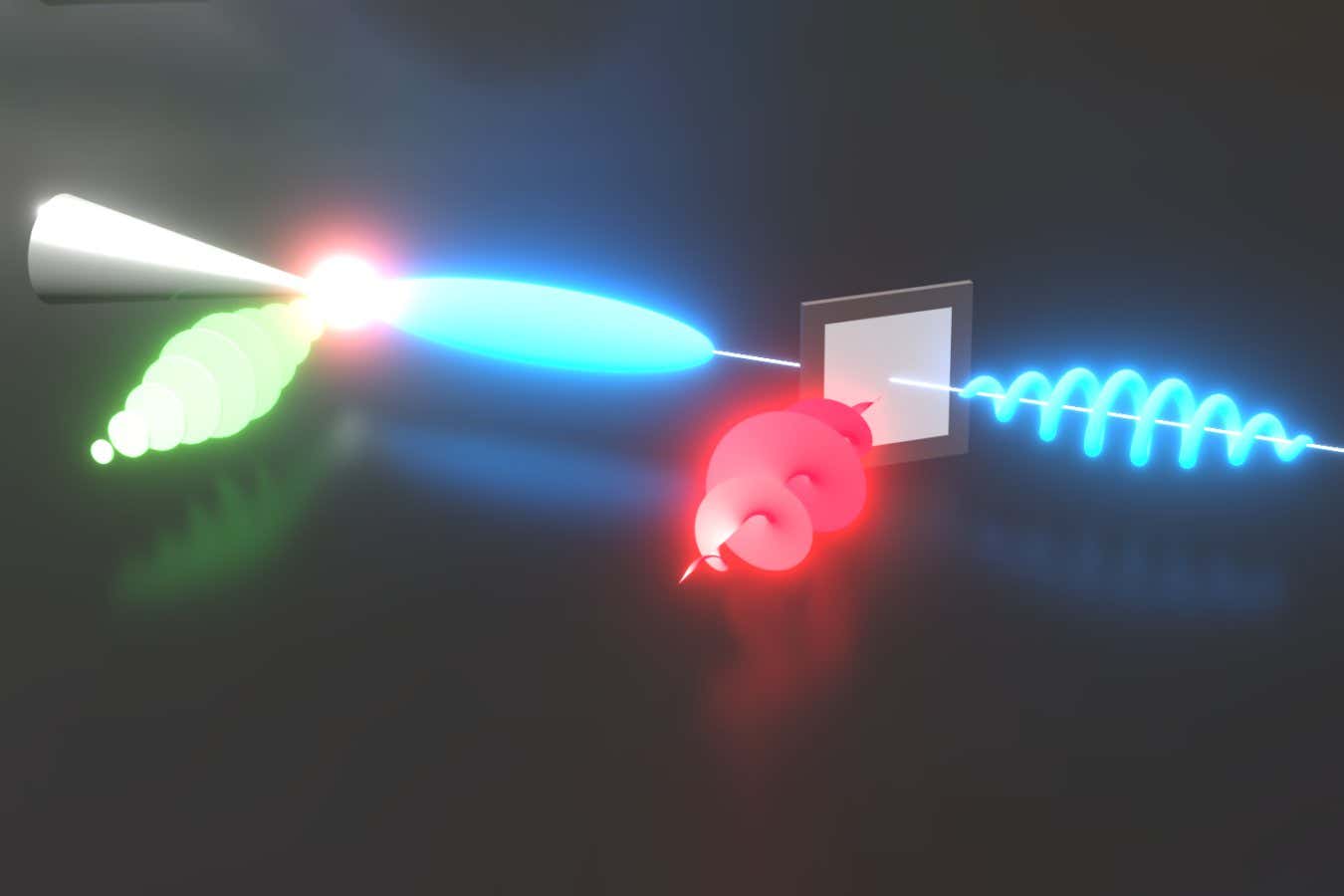
A special laser (red) can spiralise electrons (blue)
Dr. Yiqi Fang, University of Konstanz
An electron has been turned into a spiralling wave of mass and charge, with the help of a laser.
“Chirality, or handedness, is an interesting and still in part enigmatic feature of our universe,” says Peter Baum at the University of Konstanz in Germany. Chiral objects, like coils or L-shaped blocks, come in either left or right-handed forms; non-chiral ones, like circles or straight lines, do not. Many molecules and materials are naturally chiral, and whether they are right or left-handed changes how they function. But Baum and his colleagues devised a way to add chirality to something very small and elementary – a single electron.
Advertisement
Electrons are quantum objects, so they exhibit both particle-like and wave-like behaviour, depending on the experiment. In this one, the researchers took advantage of the electron’s waviness. They first created an extremely quick pulse of electrons, then passed this through thin ceramic membranes, where the particles encountered a special laser beam. The beam was shaped like a swirling vortex of light and, as a result, it carried a similarly shaped electromagnetic field. This field affected the wave function, or the wave properties, of each electron that passed through it.
Finally, the researchers detected these manipulated electrons and calculated the “expectation values” for the mass and charge of each – where in space you would be most likely to measure non-zero amounts of both traits. These regions of space formed shapes: three-dimensional coils that were distinctly left or right-handed.
Ben McMorran at the University of Oregon, who has worked on earlier experiments with making chiral electron coils, says the new work is “a very sophisticated advancement of the state-of-the-art in shaping electrons”. The team demonstrated precise control over their spiralised electrons, which will be crucial to using the particles in applications like imaging or controlling existing materials, he says.
Baum and his colleagues have already confirmed that shooting a left-handed electron coil onto a right-handed gold nanostructure produces a different ricochet pattern than it does when fired onto a left-handed structure. This opens the door for using such coils to selectively affect the chiral parts of chemical compounds or electronics devices.
Having made these odd electrons in the lab, Baum says he is now curious whether they could arise independently in nature. “We are starting to explore these possibilities.”
Topics:
